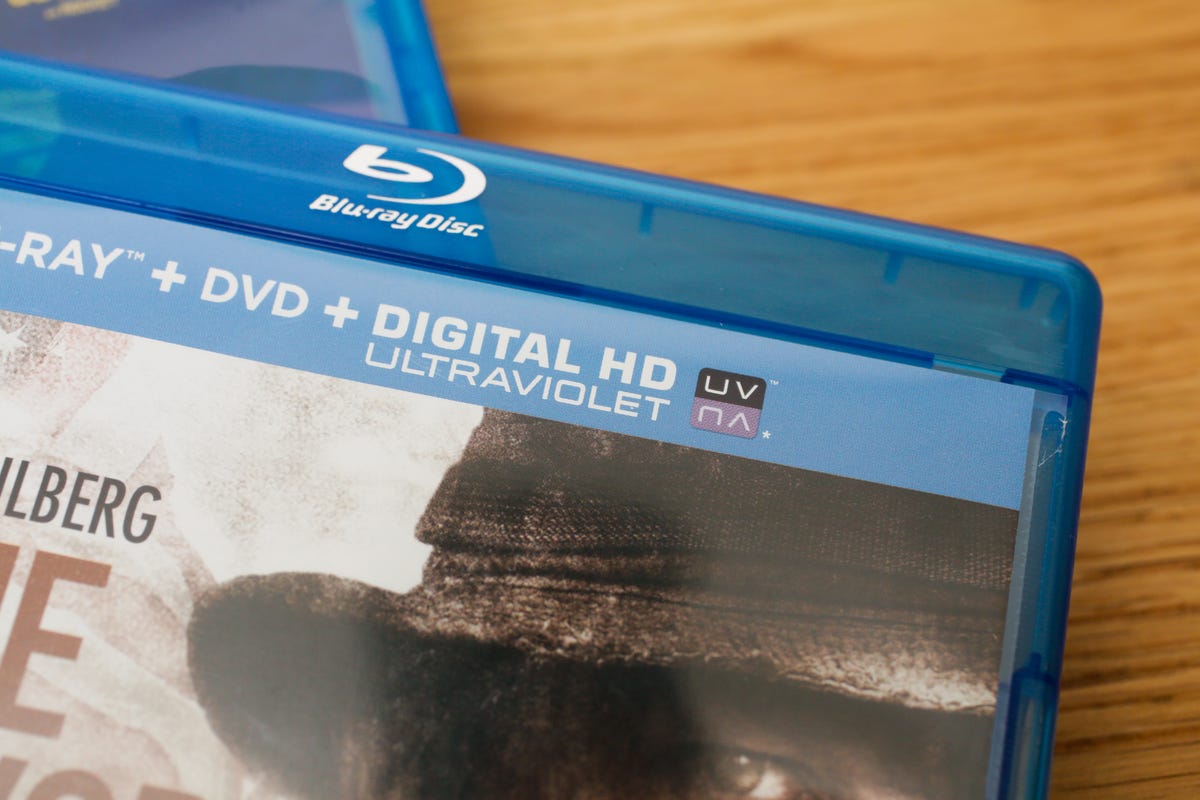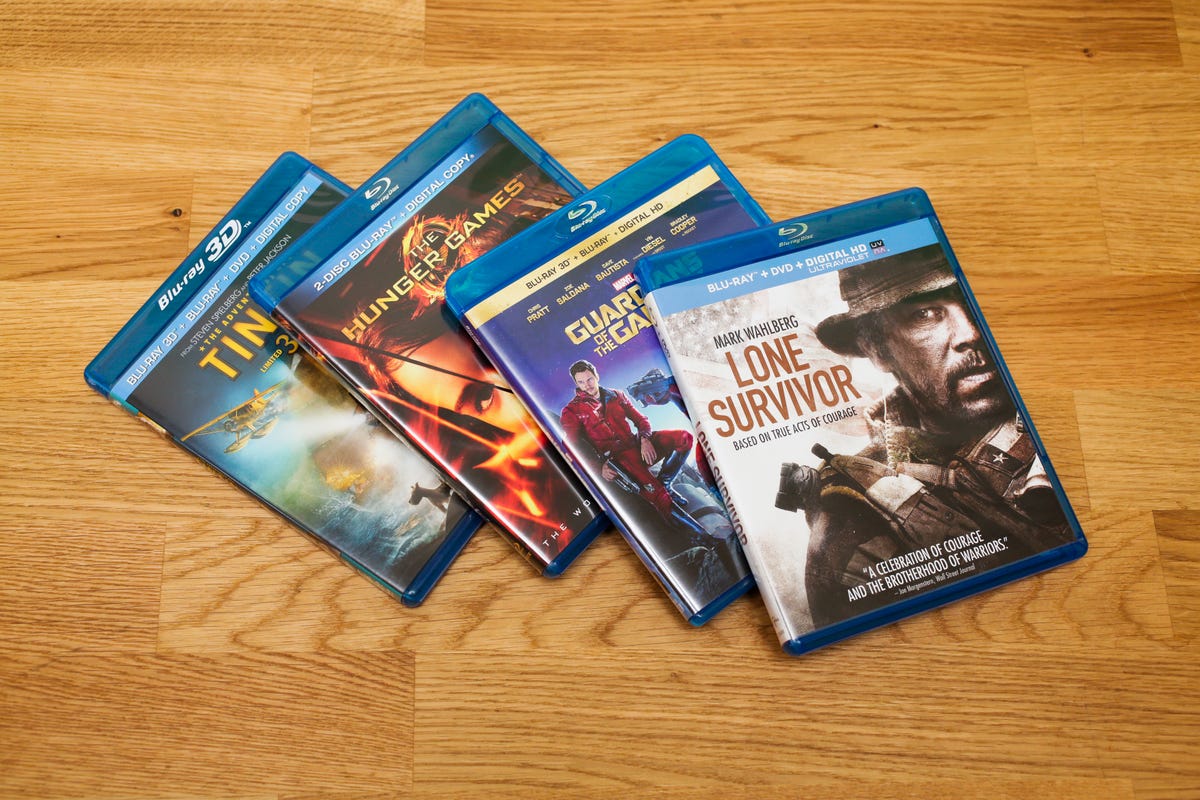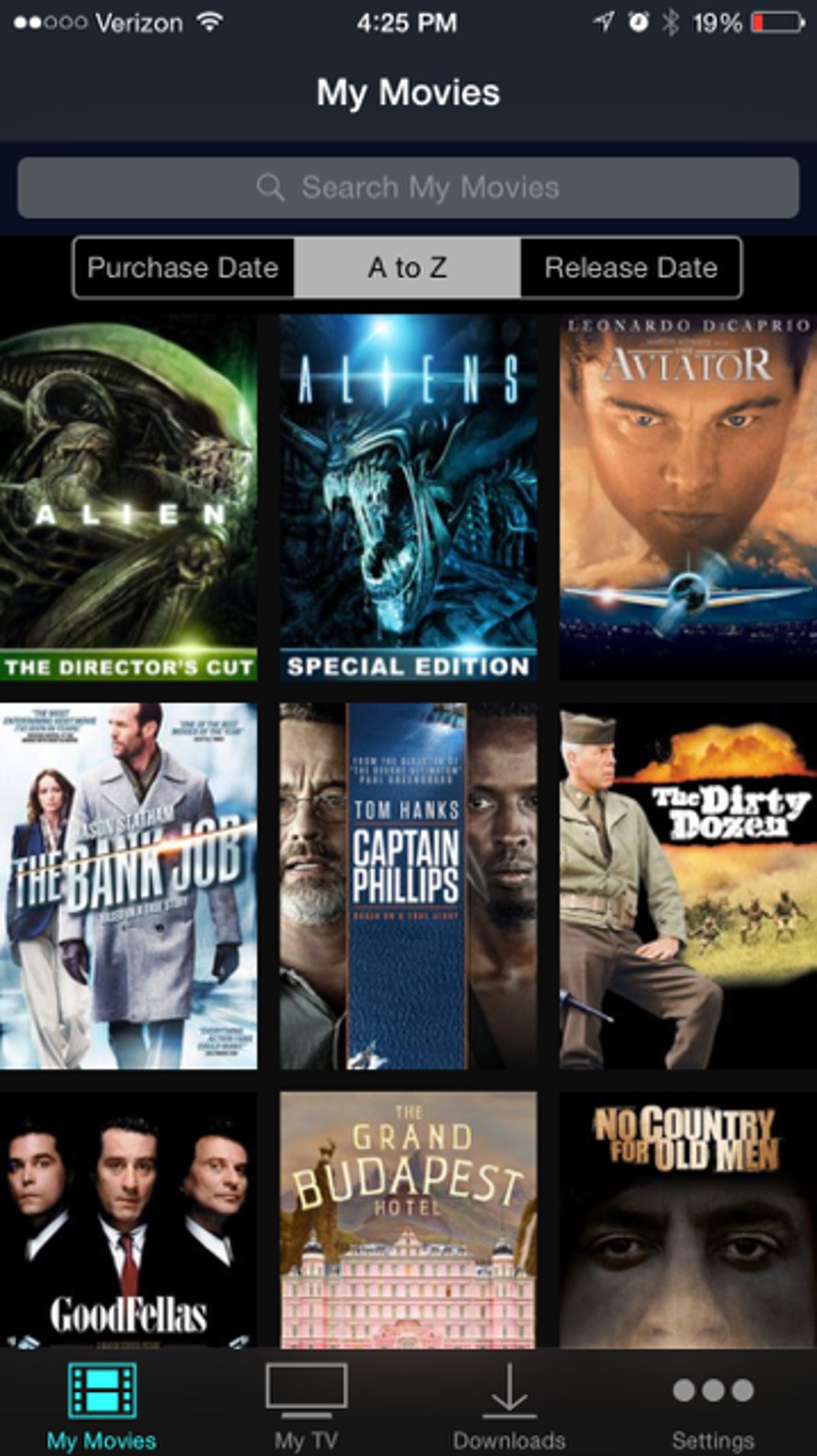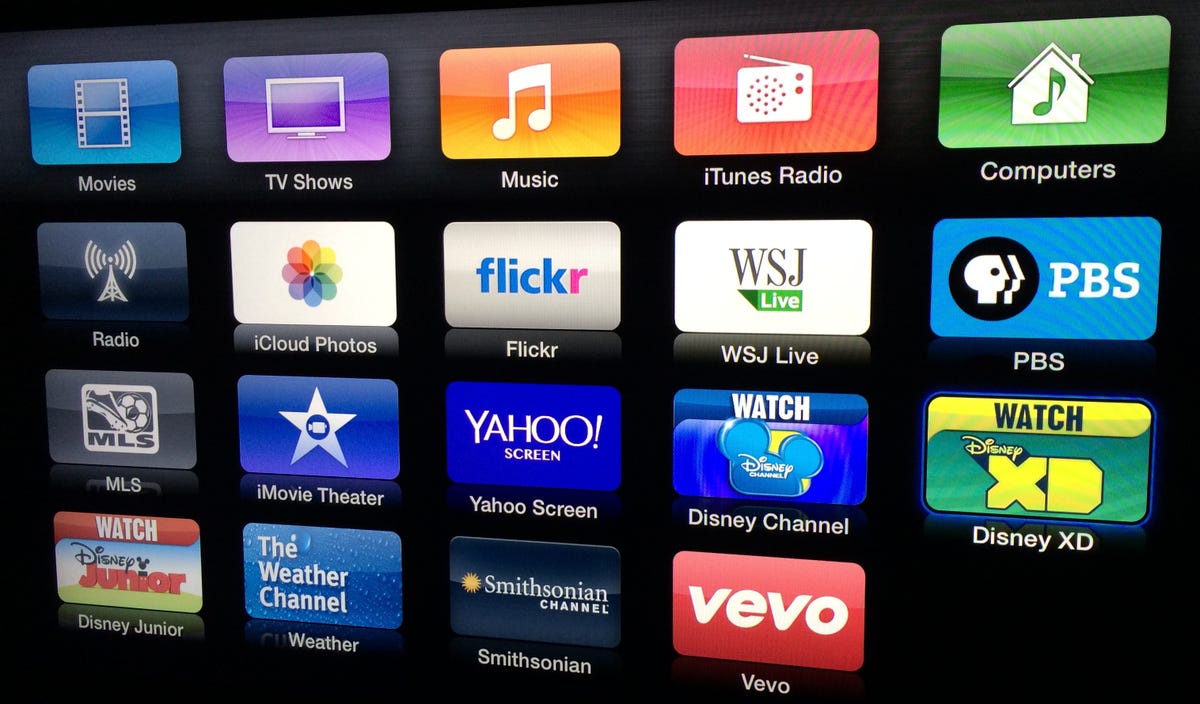
Sarah Tew/CNET
There are plenty of familiar places online where you can buy digital copies of movies and TV shows — iTunes, Amazon, Google Play and Vudu, just to name a few. But there’s also something in the digital video realm called UltraViolet. It’s a different beast altogether — more of a digital ecosystem than a single storefront — but it’s compatible with most popular operating systems and devices. And best of all, if you buy DVDs or Blu-rays, you may already have some UltraViolet digital copies in your collection.
What is UltraViolet?
The short answer is that it’s a digital video “cloud locker,” allowing you to stream or download digital videos that exist in your UltraViolet collection. Videos can be accessed through several apps, including Vudu and Flixster; a person can buy a movie or TV show and play it back on a number of different pieces of hardware, regardless of platform.
UltraViolet is backed by a consortium called the Digital Entertainment Content Ecosystem (“DECE”), which is made up of over 80 companies including cable companies, Internet service providers (ISPs) and movie studios.


Screenshot by Iyaz Akhtar/CNET
Where can you buy an UltraViolet movie online?
Broadly speaking, there are two ways to buy UltraViolet videos: at an online digital store, and bundled with a DVD or Blu-ray disc purchase.
The main online vendors for UltraViolet-compatible videos are Flixster, Vudu, M-Go, CinemaNow, Verizon Fios and Barnes & Noble Nook. However, CinemaNow, MGo and Vudu also sell non-UltraViolet videos. For example, the documentary “Pumping Iron” is available on all three services digitally, but the purchase will be locked to the particular service where you bought it. If you want to have a video that is accessible in UltraViolet’s cloud locker, keep an eye out for the UltraViolet logo on the information page of the video.


Sarah Tew/CNET
What about DVDs and Blu-ray discs?
Meanwhile, many DVDs and Blu-ray discs now include codes that are redeemable for UltraViolet copies of the content in question. Add the UV copy to your online locker, and then you can access it from any of those apps and services listed above.
If you’re specifically searching for a disc with an UltraViolet-compatible code, make sure the “UV” logo is present. Some disc labels that mention a “digital copy” refer to iTunes-only redemption codes; others include only a UV code. Still others include both.
Note that those those redemption codes sometimes have instructions directing you to sign up to a studio site before you can access the movie, but that is mostly unnecessary. Codes usually can be redeemed at the official UltraViolet site, so there is rarely a need to create individual logins for studio sites.
Another little known feature is that you can buy UltraViolet versions of many of your existing DVDs and Blu-ray discs for a small fee — $2 to get a standard-def online version of DVD movie or a high-def version of a Blu-ray, or $5 to jump to a high-def version of of DVD. This in-home Disc to Digital program is accomplished by downloading Vudu software to your Mac or PC or Flixster software to your PC and placing the disc in your Blu-ray or DVD drive. If the movie is eligible for a disc-to-digital discount (not all of them are), the software will give you the option to purchase the copy. (CNET’s 2013 test drive of the Vudu program had mixed results.)
Alternately, you can bring your discs to your local Walmart (In-Store Disc to Digital), where they’ll handle the digital Vudu update for you in-store. (Walmart owns Vudu.)


Sarah Tew/CNET
What about Disney movies?
Yes, Disney is an outlier in the UltraViolet ecosystem. Originally, it was the only major content provider (movie studio) not to join the consortium. And, indeed, it’s still not part of UltraViolet. But Disney has its own multi-platform video service called Disney Movies Anywhere — and that service is compatible with Vudu. So Vudu ends up being a kind of video Switzerland, where you can access both the cloud libraries of UltraViolet and Disney Movies Anywhere through one app.
Here’s how it works: Buying a Disney combo pack gets the purchaser a Disney Movies Anywhere code. The service can be connected to Apple iTunes, Google Play, and Vudu. When a Disney Movies Anywhere code is redeemed, the purchaser receives access to a version on Disney’s service, an iTunes copy, a Google Play digital copy, and a copy that will play on Vudu.
Making the situation even more confusing is that Disney does sell movies on Vudu and CinemaNow — but they are not UltraViolet versions. So, while Vudu plays UltraViolet movies, the Disney movies that appear in the Vudu library will not appear on other UltraViolet sites like Flixster.
That said, if a Disney movie is purchased on one of the aforementioned non-UltraViolet services (iTunes, Google Play), it should appear in the other three cloud lockers as well.
Which devices support UltraViolet videos?
There are a lot of major devices out there that can play back UltraViolet videos, all that is needed is a compatible app. Android and iOS devices such as the Nexus 6 and the iPhone support a number of apps that play UltraViolet videos like Vudu, CinemaNow and Flixster. Those same UltraViolet apps are capable of streaming their videos to Google’s very inexpensive Chromecast .


Screenshot by John P. Falcone/CNET
Streaming boxes from Roku and game consoles like the PlayStation 4 and the Xbox One all support Vudu, which gives access to an UltraViolet library. Note that the Flixster app on Amazon Fire TV currently only supports standard-definition playback, however.
While Apple TV currently offers no UltraViolet-compatible app, you can use AirPlay to stream UltraViolet videos from your iPad, iPhone or iPod Touch with the CinemaNow and Flixster apps. Notably, the Vudu app does not support AirPlay playback.
Can I download UltraViolet movies?
Movies in the UltraViolet format are usually available to be streamed (real-time YouTube-style playback, requiring an active Internet connection) or downloaded (for offline playback later, such as on an airplane or other wireless-challenged environment) on PCs and mobile devices.
On phones and tablets, the download and playback is handled within the UltraViolet-compatible apps, including Vudu or Flixster. Purchased movies will appear in the download section of those programs.
On a PC or Mac, the same restriction usually applies — you need to download a special Vudu player for Vudu video, for instance. In the future, this is supposed to change with the introduction of the Common File Format (CFF). It would allow a download of a movie that could, in theory, be more easily transported between devices. In the meantime, you’ll need to download copies on each device you intend to view them on offline, however.
Can I share my UltraViolet library?
The Vudu service allows a person to share their UltraViolet library with up to five people.
Is one UltraViolet app better than another?
If you haven’t noticed, we keep coming back to Vudu. It’s not perfect, but the combination of its wide device support, Disney Movies Anywhere compatibility and Walmart backing make it the go-to default choice.
Of course, if you end up disliking it for any reason, you can link your UltraViolet library to any other compatible app (such as Flixster), so it’s close to a risk-free proposition.


Sarah Tew/CNET
Will my Apple or Amazon video collections ever be accessible via UltraViolet?
The dream, of course, would be for “one app to rule them all” — a single video app that would allow you to access any cloud-based videos you “own,” be they on Apple’s iTunes, Amazon Video or one of the UltraViolet partners, such as Vudu.
Well, don’t hold your breath. Apple, Amazon and Walmart (Vudu’s corporate parent) are frenemies at best, arch-rivals at worst.
The very existence of UltraViolet is partially a response to movie studios fighting the growing power of Apple — they wanted to create an alternative to iTunes, so they wouldn’t find themselves at the mercy of Apple (as the record companies did when the MP3 revolution caused CD sales to crash). And Apple, of course, tends to opt towards a “walled garden” approach when it comes to compatibility. So the idea of Apple signing on to the UV consortium, and allowing you to merge your iTunes and UltraViolet libraries — thus making them accessible on non-Apple devices — seems like a long shot of long shots.
Likewise, Amazon online video purchases are not currently UltraViolet compatible. There are occasional rumors that Amazon is moving to join the UltraViolet coalition (most recently, an October 2014 Wall Street Journal story), but so far, nothing has materialized.
That said, these three ecosystems do intermingle somewhat. Vudu and Amazon videos are available on Apple’s mobile iOS devices. So while they’re not all available in the same app, you can get all of your video from these three arch-rivals on iPhones and iPads.
It’s not perfect, but it’s a better situation than we had with VHS and Beta, or HD DVD and Blu-ray.




